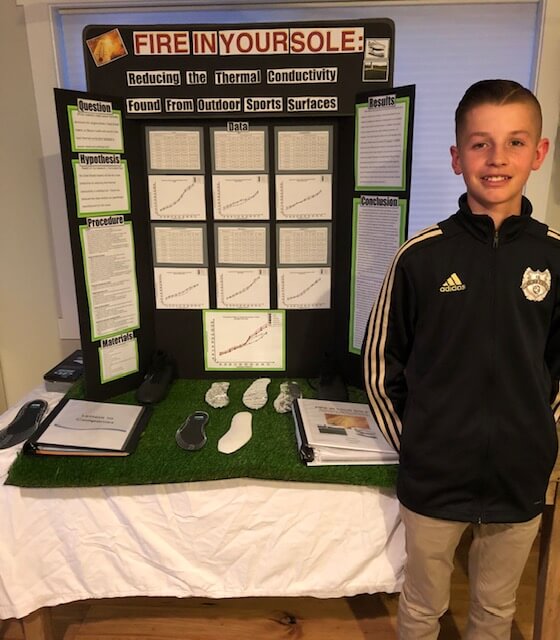
How to Keep Your Kids Feet Safe From Turf Burn & Heat Blisters
As a parent, nothing is worse than seeing your child in pain. Every year, thousands of children playing sports are exposed to heat blisters, peeling skin, and other forms of turf burn. So how are we supposed to keep our kids feet safe from these types of injuries? You could use tin foil, engine heat shield material, or other DIY heat shields, but do they actually work? And are those really your best options?
One kid from Phelan, California was eager to find out. He decided to test out a couple of different materials, including our BluSol Heat Shield Inserts and sent in this testimonial.
“My name is Brady Elliott and I am an 8th Grader at Heritage School in Phelan, CA. I have been playing in the US Soccer Development Academy Program for Golden State FC Academy since I was 8 years old. My passion is not only soccer but math and science and this year I wanted to bring my love for soccer, math, and science and focus my science project on something that addresses the ongoing problem that the soccer athletes face daily. This problem is the dangerous temperatures synthetic turf can reach and its impact on players. With more fields turning to synthetic grass over a cooler natural grass, players are on fields that can reach up to 170 degrees, thus putting them at risk for burns, blisters, and more injuries.
Unfortunately, I practice year round, 5 days a week, on synthetic turf. Especially during the summer months, my teammates and I have suffered blisters and other injuries related to the temperatures. As you know, with higher-level soccer, athletes pick a cleat that may be lighter, but with lighter cleats means little to protect the foot from heat.
I have spent over five months gathering research and conducting various tests on which material would reduce these dangerous temperatures produced by synthetic turf. For my science project, I bought a pair of your BluSol inserts and included them in the materials that were being tested.
I believe you will be happy with your product’s results and its success. While the amount of athletes playing on synthetic turf increases every day, the hazardous temperatures that the synthetic turf gives off will not change. One thing that can change is the use of a protective insole insert such as BluSol to protect us athletes. After seeing how BluSol held up in my science project, I know I will be purchasing some pairs to use in my own cleats in the future.”



Incredible right? What an amazing testimonial! At BluSol, we strive to keep your children’s feet safe from burns and blisters. If your child is suffering from blisters, burns, and peeling skin, try our heat shield inserts and see what a difference it can make in their comfort.





Recent Comments